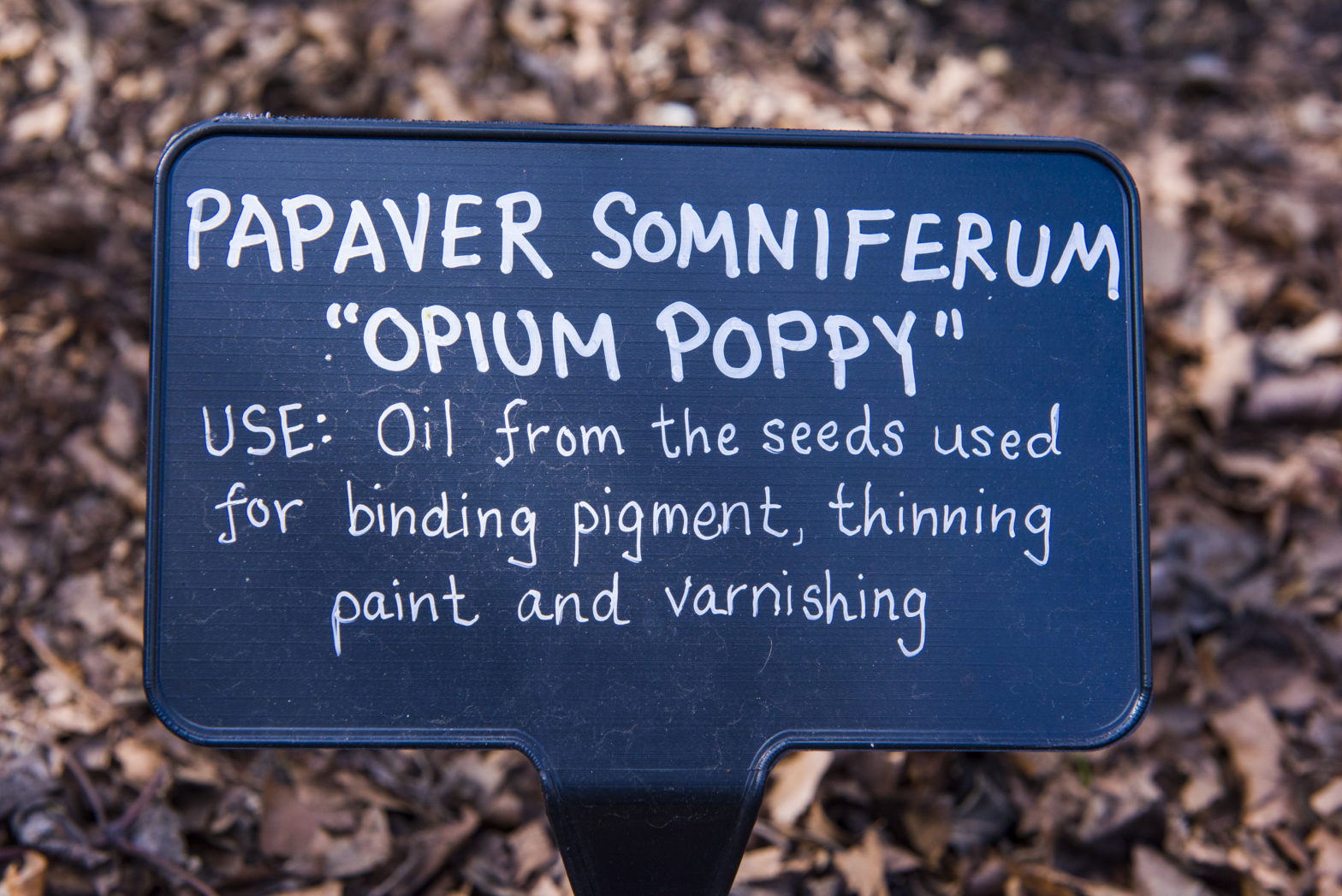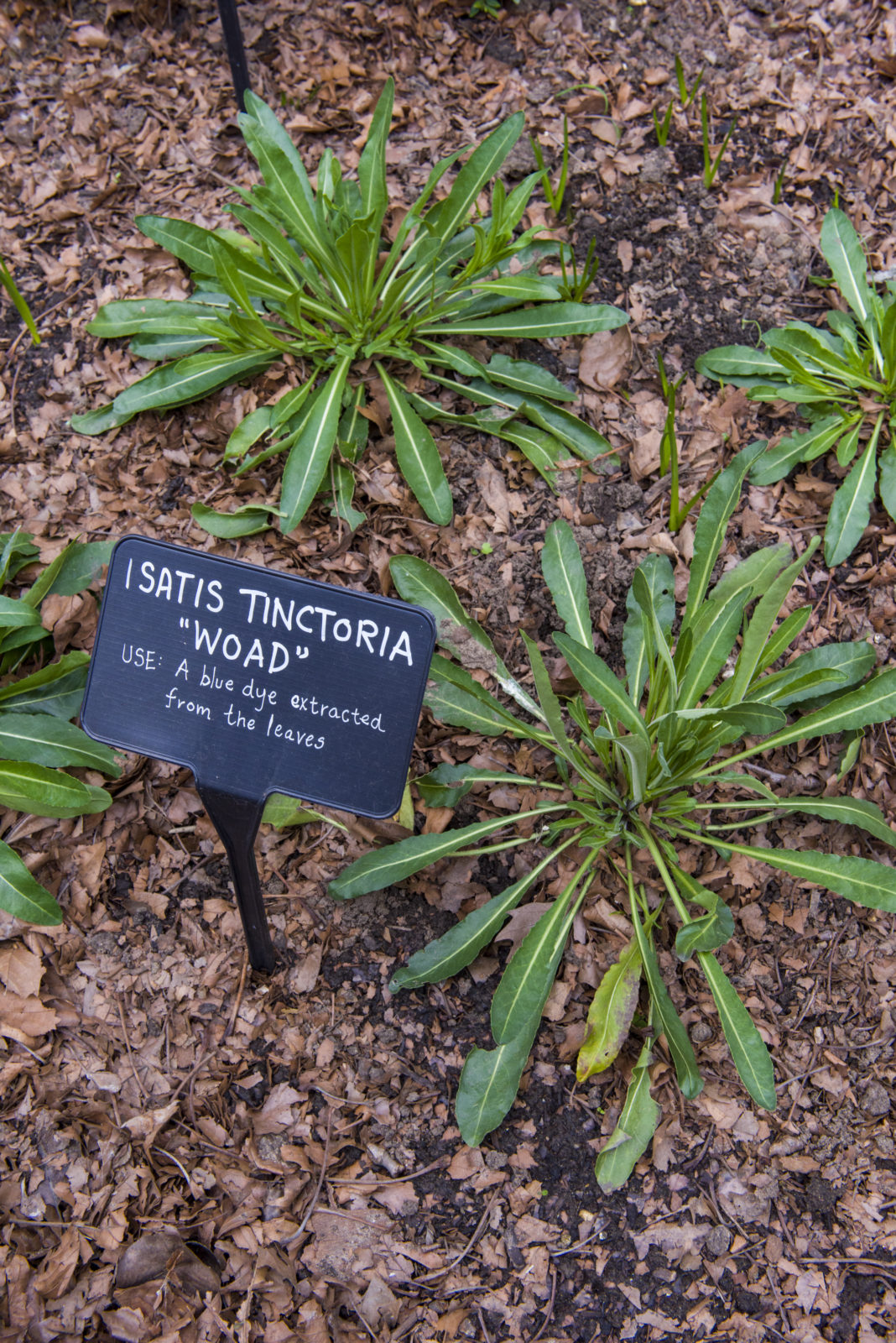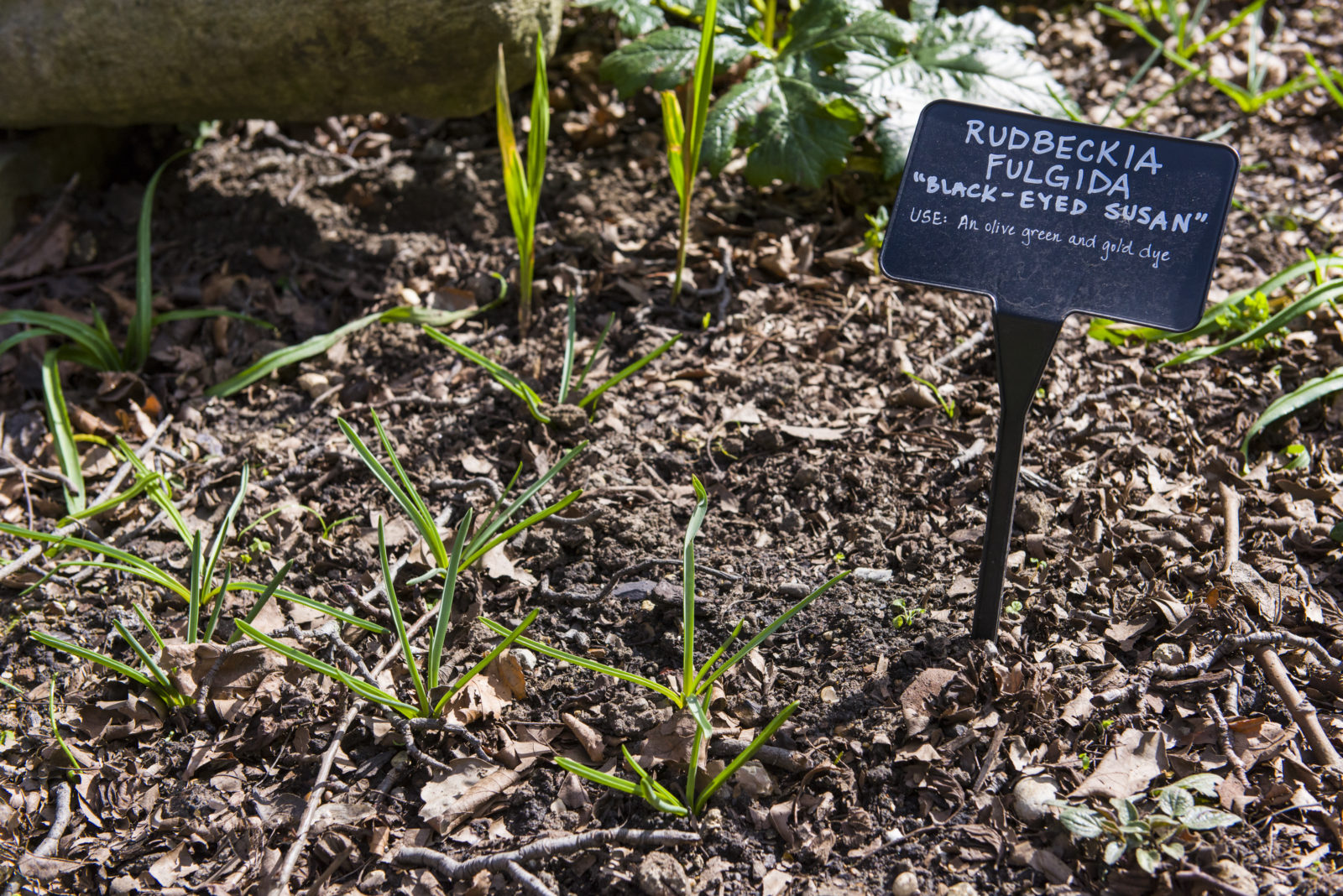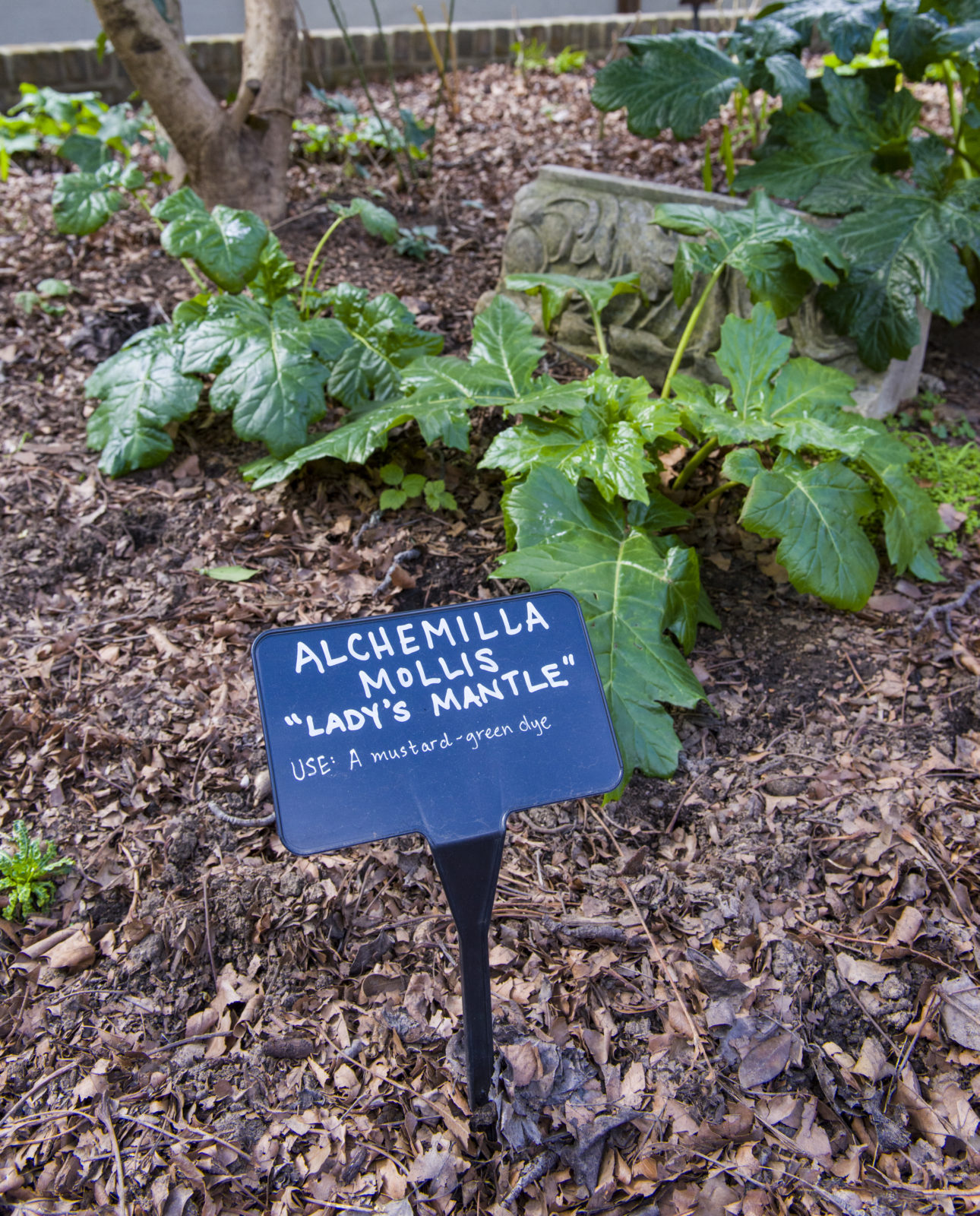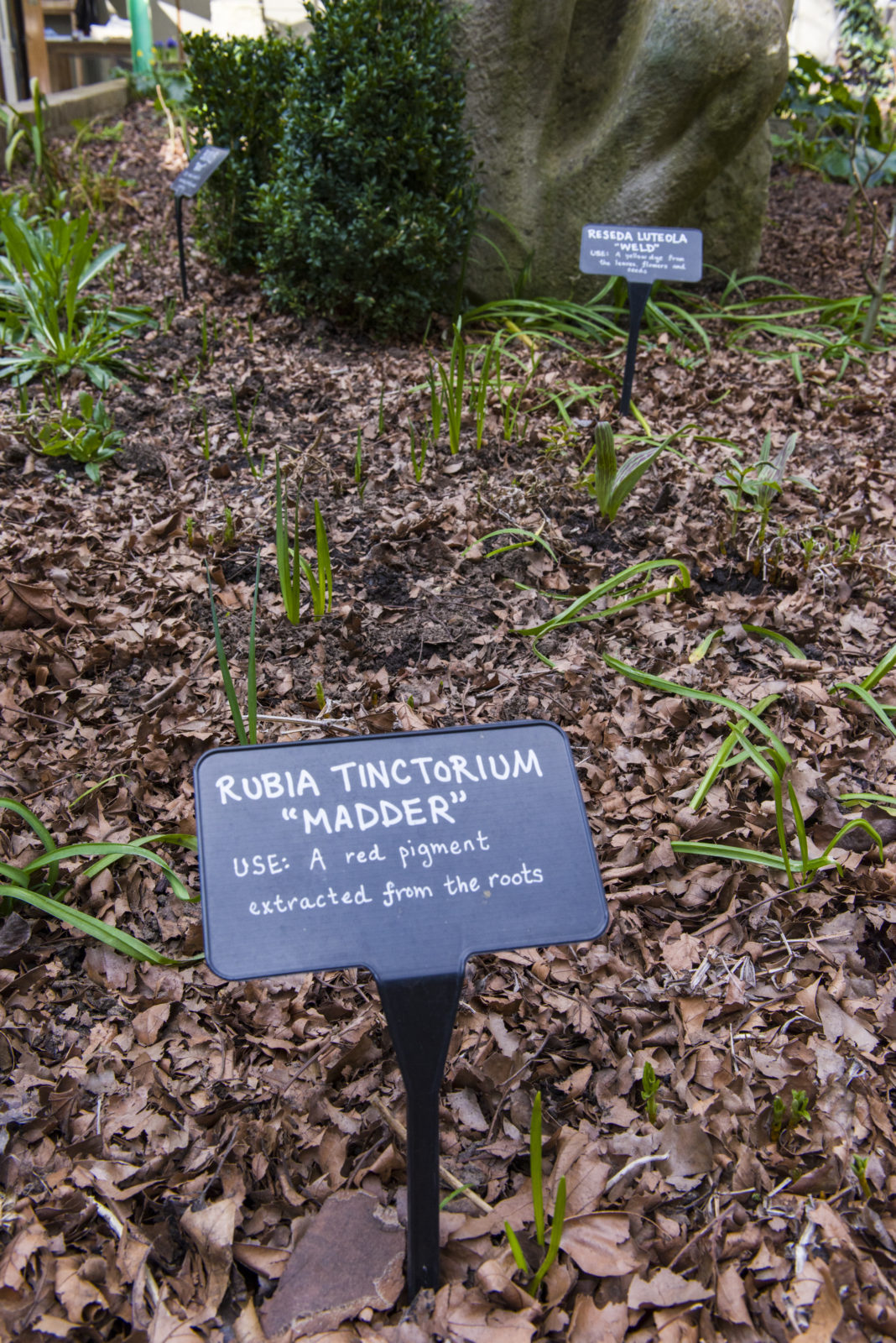The garden area at the back of the Art School has naturally evolved over many years. In summer 2017 it was re-landscaped as part of Phase 2 of our Masterplan, a building and refurbishment scheme to develop and upgrade the Art School. The landscaping work set out to uphold the special atmosphere that the courtyard garden provides while offering a more usable outdoor terrace and level access for the stone yard area. This work provided an opportunity for a new planting scheme linking with our Material Matters theme of pigment.
Ed Adlington—BA(Hons) Fine Art 2007, Print Room Research Fellow 2014-16, and gardener—was invited to conceive and implement a new planting scheme incorporating a variety of plants that have one thing in common. They are all integral to the process of creating art, whether that’s being used to form charcoal or to provide design motifs in historic architectural carving. Many of the plants now featuring in the garden are the traditional source of a range of colour pigments.
As they become more established, Art School students will have the opportunity to experience the life cycle of pigments and other art materials, from their horticultural beginnings to the colourful paints they create, with harvesting and pigment-making demonstrations planned next year. Ed says:
“With the new planting scheme I wanted to engage the students with their garden by showing the direct link between plants and their practice of art and making. As time goes on I look forward to watching the garden bloom and mature and I plan to add more relevant plants into the space over the next few years.”
Pigments and dyes growing in our garden:
- Rubia Tinctorium “Madder” – a red pigment extracted from the roots
- Alchemilla Mollis “Lady’s Mantle” – a mustard-green dye
- Rudbeckia Fulgida “Black-eyed Susan” – an olive green and gold dye
- Isatis Tinctoria “Woad” – A blue dye extracted from the leaves
- Reseda Luteola “Weld” – a yellow dye from the leaves, flowers and seeds
- Anthemis Tinctoria “Dyer’s Chamomile” – a yellow dye from the flowers
- Vitis Vinifera “Grape Vine” – vine black pigment from charred stems

